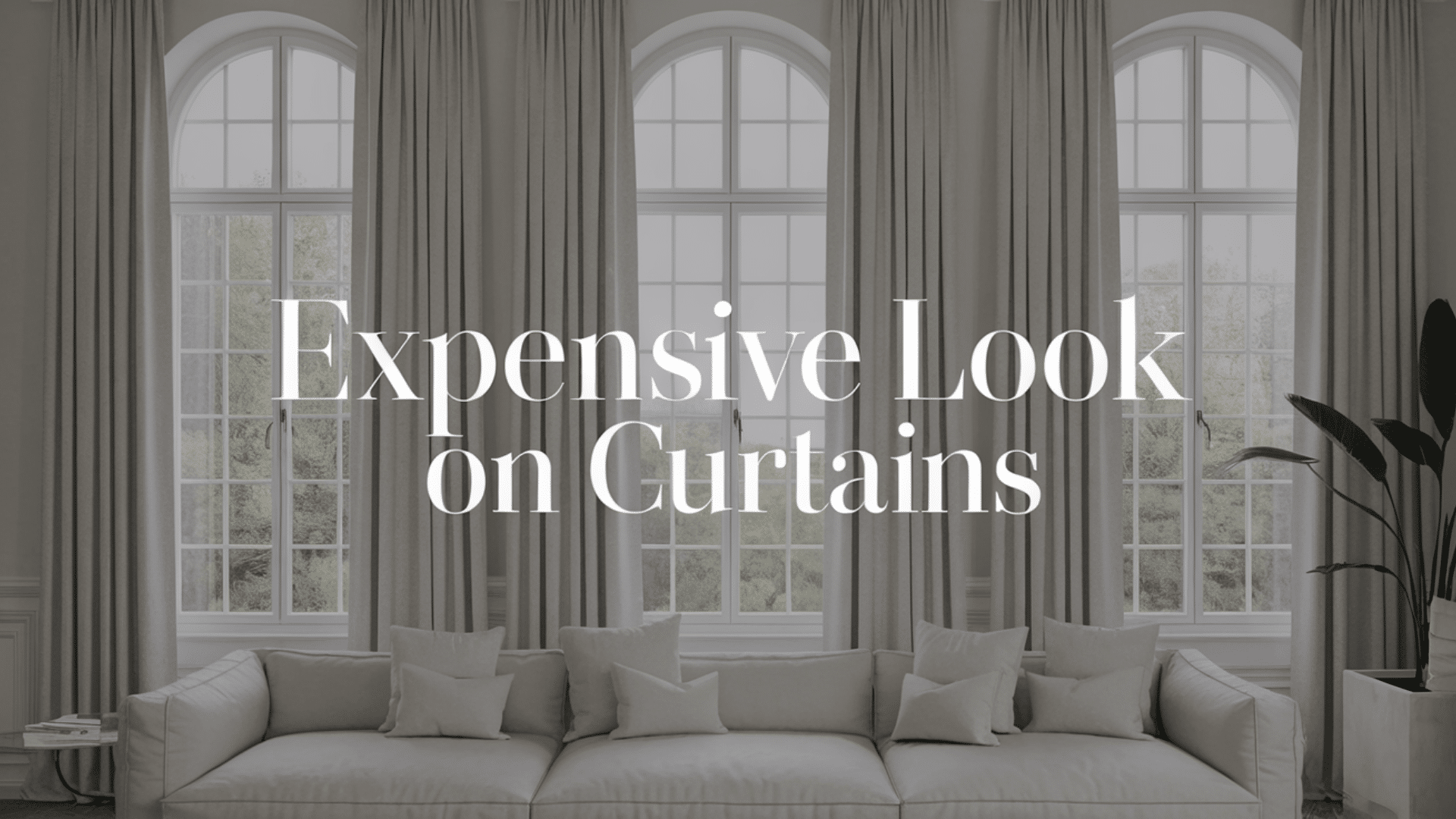Want to make your home feel more stylish and expensive—without spending a lot of money?
Curtains might be the secret you’ve been missing. These simple window coverings can totally change how a room looks and feels.
With the right fabric, size, and style, curtains can take your space from plain to polished. A few smart choices can make cheap curtains look high-end.
And the best part? Most of these tips won’t cost much at all.
In this guide, I’ll show you how to make your curtains look like they came from a fancy designer store.
You’ll learn what kind of fabric works best, how to hang them the right way, and small tricks that make a big difference.
I’ve helped lots of homeowners get this look in their own homes. Regardless of if you’re decorating your first apartment or giving your forever home a little refresh, these tips can help.
Let’s get started and give your windows the glow-up they deserve!
Difference Between High-End-Looking Curtains and Budget-Friendly Curtains
You can really feel the difference between expensive-looking curtains and ones that don’t quite work. It’s not just about cost. It’s about how the curtains hang, look, and feel in a room.
High-end curtains look full and smooth. They usually hang all the way from the ceiling to the floor.
The fabric is thick enough to hold its shape and soft enough to move nicely. Good curtains catch the light in a soft, beautiful way. They make the room feel complete.
Basic curtains often don’t have that same effect. They might be too short or too long. The fabric may be thin or wrinkle easily.
The hardware might not match the style of the room. Some don’t have a lining, so they let in too much light and look flat.
The great news? You can get that high-end look even with a small budget. It just takes a few smart choices and the right details.
How to Make Your Curtains Look Expensive
You don’t have to spend designer prices to get designer looks. With a few smart upgrades, your curtains can add beauty and polish to any room. Here’s how:
1. Choose High-Quality Fabrics
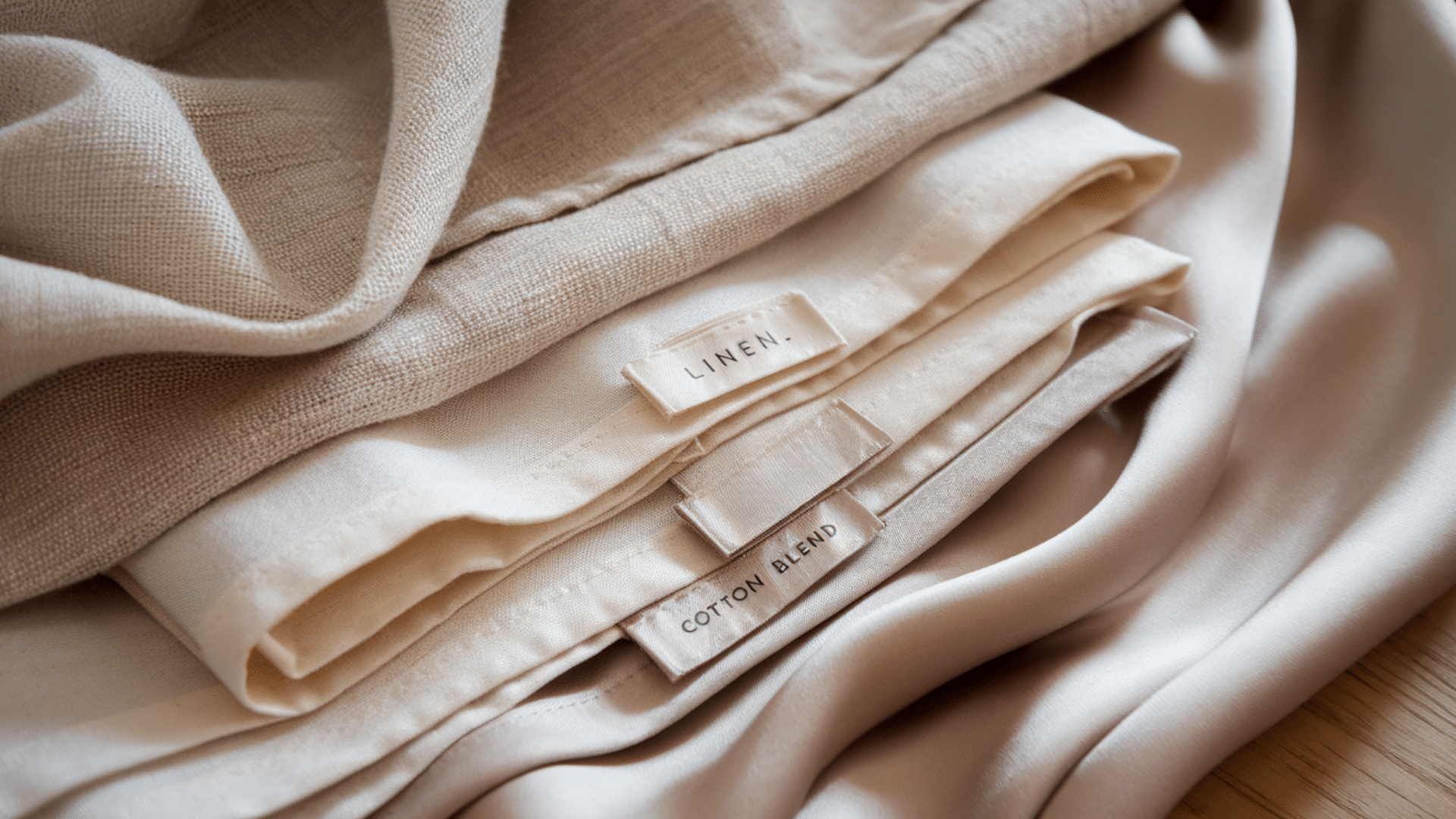
Fabric makes a big difference. It’s one of the first things people notice. Natural materials like cotton, linen, and silk look richer than synthetic ones.
Linen adds texture. Silk gives a soft shine that feels fancy. If silk is too pricey, try a cotton blend. Look for fabric with at least 50% natural fiber.
Heavier fabric makes better folds. Even light fabrics should hang well. Avoid shiny materials unless they’re real silk. Shiny polyester often looks cheap.
Choose fabrics with a soft finish. A little texture or a matte look makes curtains seem more expensive right away.
2. Opt for Floor-to-Ceiling Length
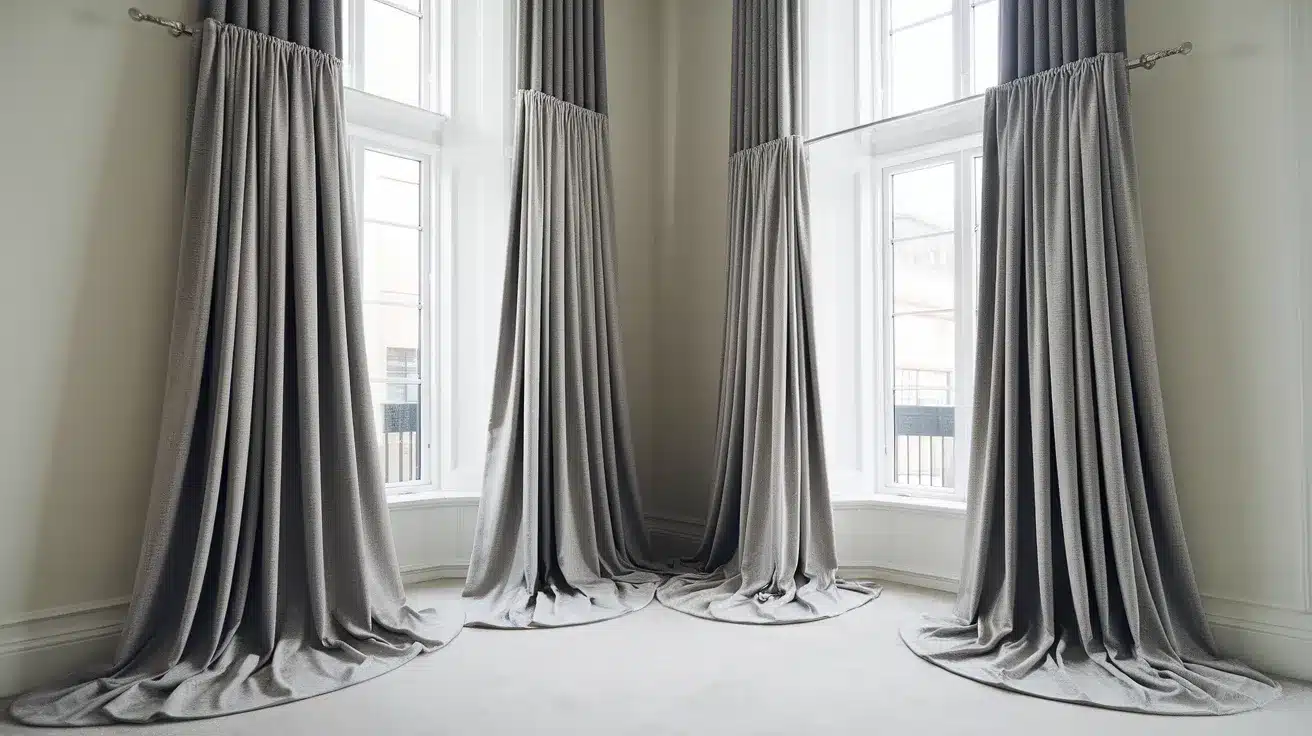
Curtains that stop short look awkward. They can make the ceiling feel low. Long curtains make a room look taller and more beautiful.
Measure from the rod to the floor. Then add extra length depending on your style. You can choose curtains that just kiss the floor, break slightly, or pool for a dramatic look.
Always round up if you’re between sizes. It’s better for curtains to be a bit long than too short.
Curtains that end several inches above the floor feel unfinished. Even the nicest fabric won’t help if the length is wrong.
3. Use Wide Curtains
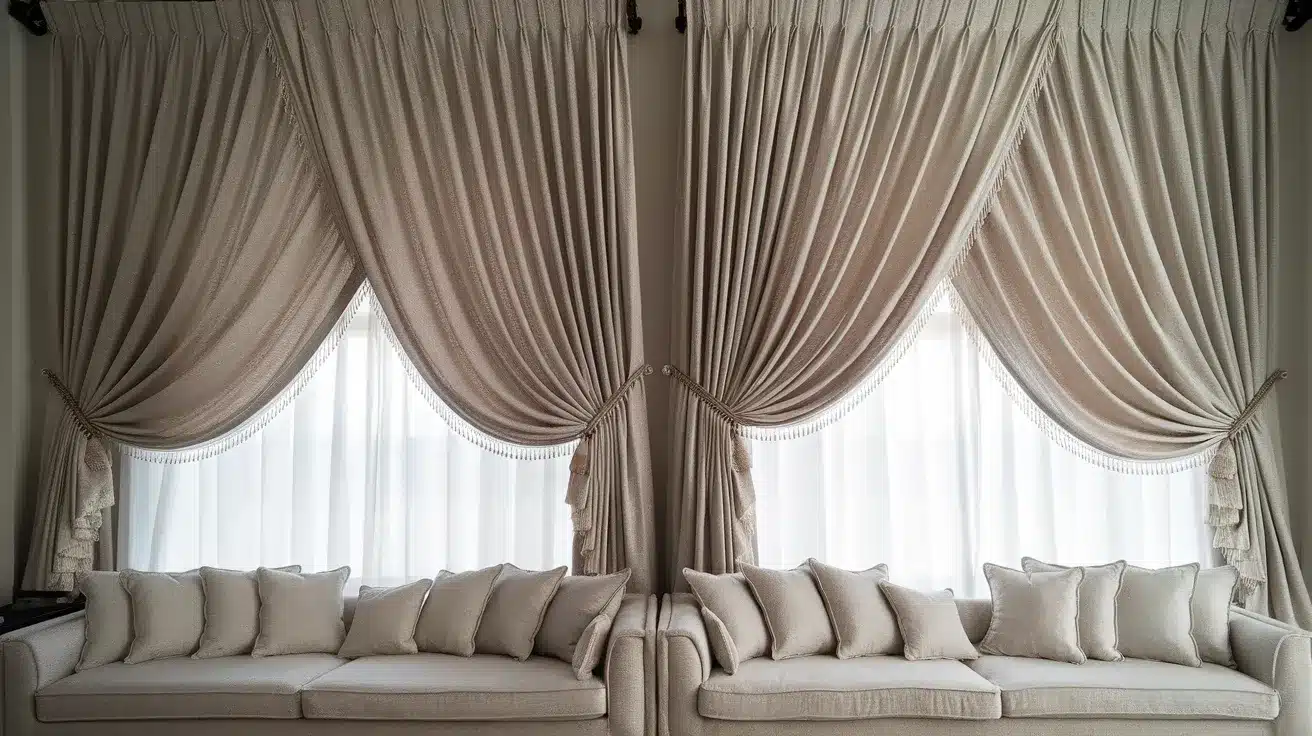
Curtains should be wide enough to cover the window and still look full. If they just barely cover the window, they’ll look flat and cheap.
Aim for curtains that are 2 to 2.5 times the width of the window. This gives you nice folds when open and a soft, full look when closed.
For example, if your window is 40 inches wide, your panels should total 80 to 100 inches wide. You might need two panels to get this effect.
Even if you don’t plan to close the curtains, make sure they’re wide enough to hang in gentle folds. Full fabric always looks more stylish.
4. Invest in Lined or Double-Layered Curtains
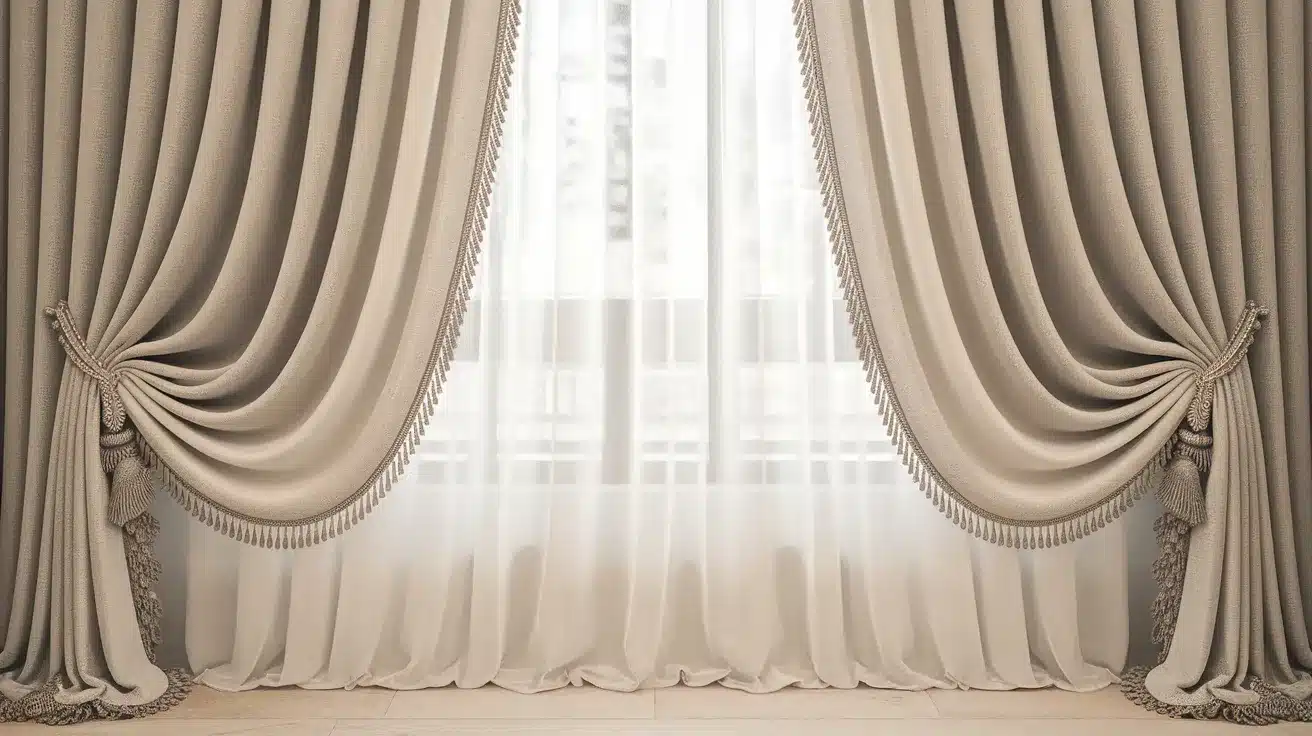
Thin curtains let too much light shine through. This can make even nice fabric look cheap. Lined curtains fix that problem.
A good lining helps curtains hang better. It adds weight and keeps folds neat. It also blocks light and protects fabric from fading.
Blackout lining is great for bedrooms. It makes the room darker and gives curtains a fuller look. If that’s too heavy, try interlining—a soft layer that adds plushness and helps with temperature control.
Even basic cotton lining makes a big difference. Double layers, like a sheer and a solid curtain, add depth and a designer feel.
5. Install Curtains High and Wide
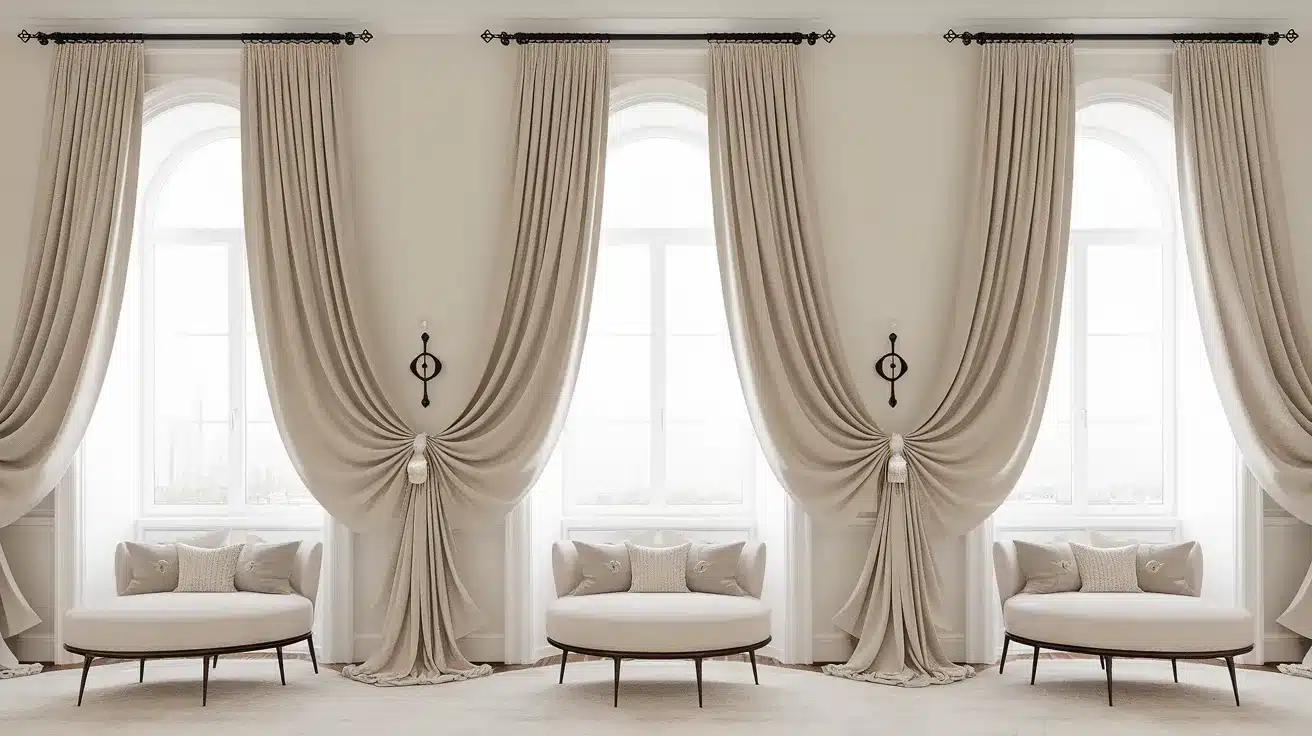
Hanging curtains too low makes windows look small. It also shortens the room. For a high-end look, hang your curtain rod closer to the ceiling.
Try placing the rod about 4–6 inches above the window frame. In rooms with low ceilings, go all the way to the top. This makes the space feel taller.
Go wide, too. Extend the rod 8–12 inches beyond each side of the window. This lets curtains frame the window instead of blocking light.
Measure carefully. Use a level to make sure everything is straight. Neat, even curtain placement makes a room feel polished and well-designed.
6. Choose Stylish Curtain Rods and Hardware
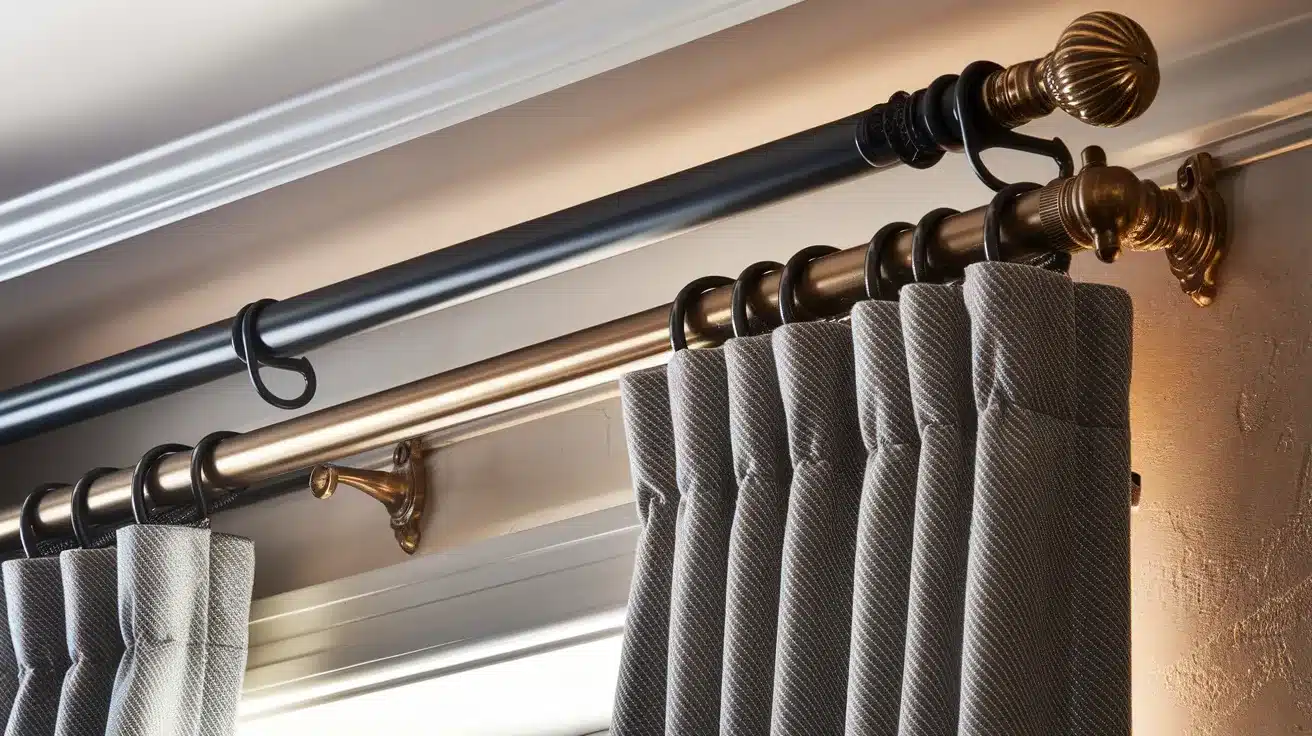
Curtain hardware is like jewelry for your windows. Cheap rods and brackets can ruin the look—even with nice curtains.
Use rods that are at least 1 inch thick. Thin ones bend easily and don’t look strong. Pick a rod that fits your room’s style.
Traditional rooms look great with decorative finials. Modern spaces might need sleek rods with clean lines.
Match the rod color with other metals in your room. Try black, brass, or brushed nickel. Don’t forget the brackets—cheap plastic ones won’t hold up.
Choose curtain rods that match the curtain top, like grommets or pleats. Every detail counts.
7. Use Structured Curtain Styles
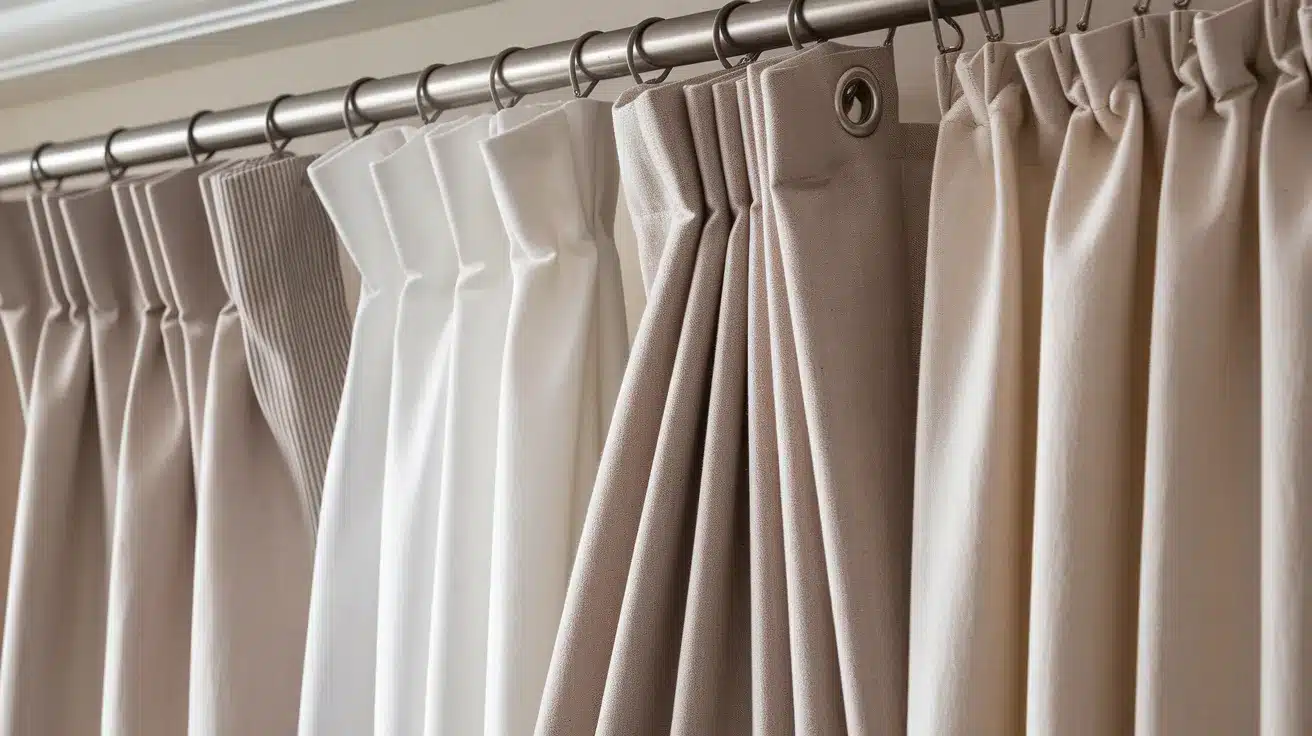
The way your curtains hang at the top is called the header style. This small detail makes a big difference in how your curtains look.
Styles like pinch pleats keep their shape and look neat. They give off a custom, expensive feel. French pleats are another classy option. They make nice folds and work well in formal rooms.
Inverted pleats look more modern but still hang neatly. Avoid casual styles like rod pockets or tab tops. They often look cheaper.
Back tabs give a relaxed but tidy look. If you choose grommets, pick metal ones—not plastic—for a better finish.
8. Iron for a Wrinkle-Free Finish
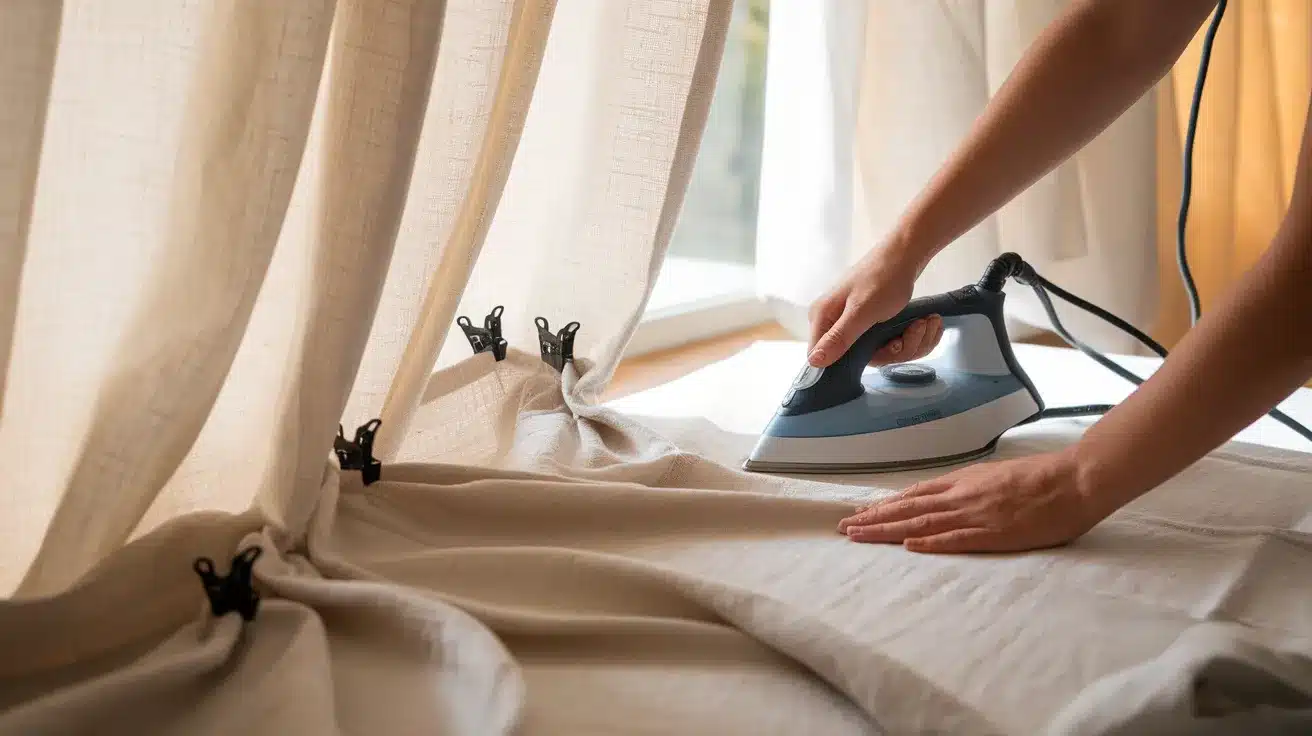
Wrinkled curtains look messy, even if they’re expensive. Ironing or steaming your curtains makes them hang better.
If your curtains were folded in a package, they’ll have creases. Iron them before hanging. Be gentle. Use the right heat for the fabric. You can use a pressing cloth to protect delicate fabric.
No iron? Try a steamy bathroom or a garment steamer. Spraying lightly with water can also help remove wrinkles.
Once they’re up, smooth the folds. Some designers lightly clip the curtains to “train” the fabric. This helps it hang in perfect, soft folds that look high-end.
9. Accessorize with Tiebacks or Holdbacks
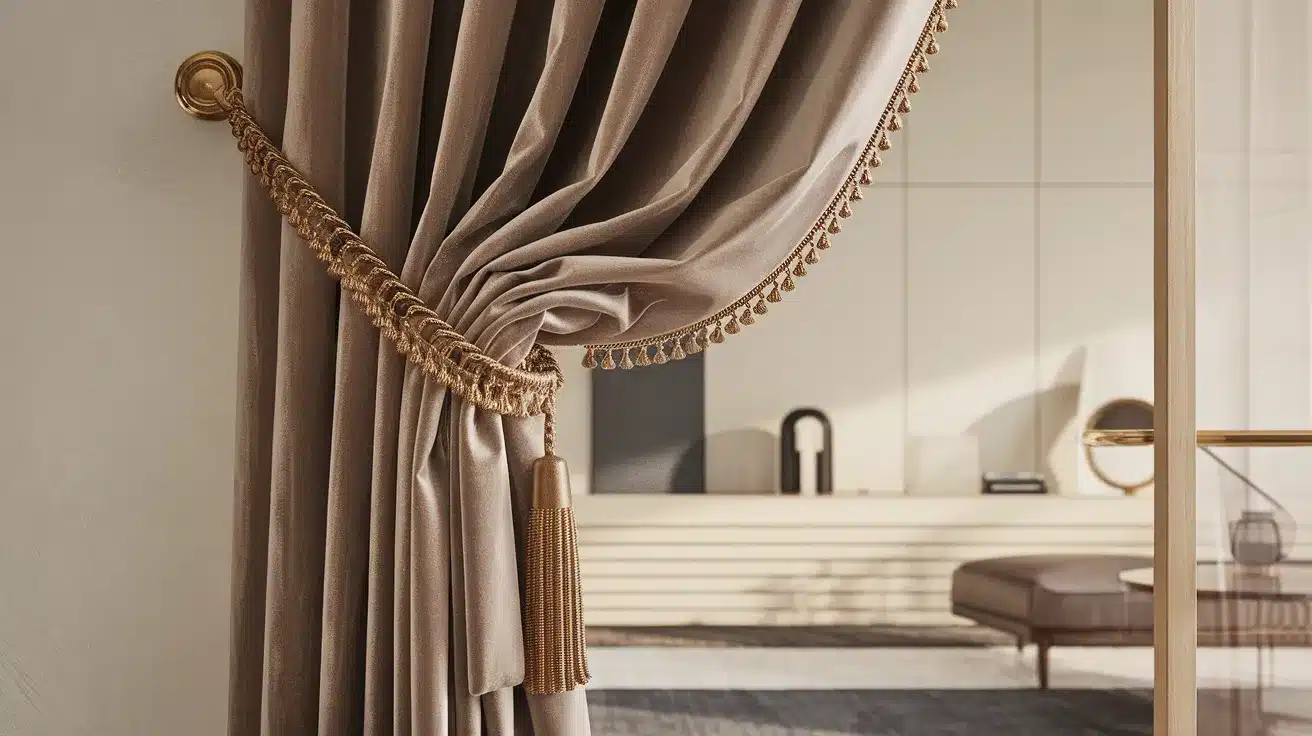
Curtain accessories can add a polished look. Tiebacks hold your curtains open in a soft, pretty shape. Holdbacks attach to the wall and do the same job in a different way.
You can use fabric tiebacks, ropes, or even metal ones. Pick one that matches your room’s style. Tassels work well in fancy rooms.
Simple ropes or wood pieces are great for modern or rustic homes.
Place tiebacks about two-thirds down the curtain. That’s where they look best. You can also “train” the fabric to fall in folds using clips for a day or two after hanging.
Conclusion
You don’t need a big budget to make your curtains look amazing. Just a few smart choices can completely change the look of your space.
Start with the fabric. Natural materials like linen or cotton always look more expensive. Add lining to give the curtains weight and help them hang neatly.
Length and width matter too. Hang your curtains high and wide. This makes your windows and ceiling look bigger. It’s a simple trick with a big effect.
Good hardware helps, too. Choose a strong rod and brackets that match your room’s style. Don’t forget to iron or steam out wrinkles. Smooth curtains always look more polished.
Extras like pleats or tiebacks give your curtains a finished look. You can start small—just one or two changes—and add more over time.
Curtains should do more than block light. They should frame your room, add warmth, and show your style.
Which tips will you try first? I’d love to hear your ideas in the comments. You might inspire someone else to refresh their space, too.

